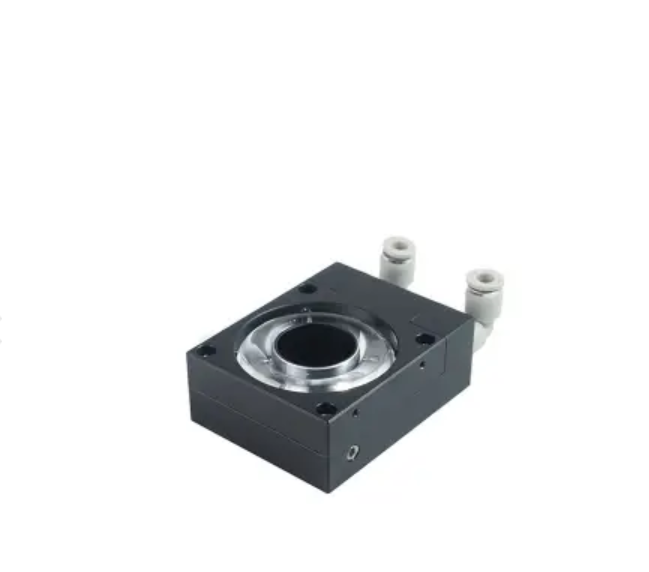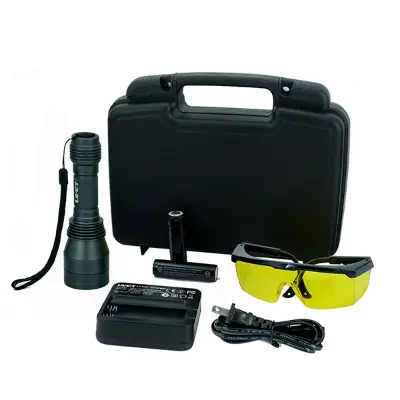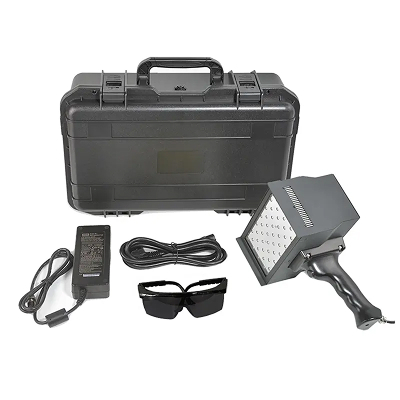What Is Ultraviolet Curing?
This is a mode of curing, where a reaction is catalyzed by UV light to harden or polymerize a liquid substance - i.e., adhesive, ink, or coating - into a solid. This is unlike the thermal process, whereby the UV curing process takes advantage of the light energy to trigger the activity of photoinitiators, thus causing the immediate polymerization. This process is also termed photopolymerization, and it is founded on the application of certain UV wavelengths (typically 365nm, 385nm, 395nm, and 405nm). The wavelength determines the curing depth, speed, and compatibility in materials. Basically, UV curing is an energy-efficient and non-contact method of curing that offers predictable curing action without deformation of delicate materials.
The Curing Process of UV explained
The UV method of curing involves three large components:
UV Light Source- It is generally a lamp module of LED arrays or a mercury lamp that emits controlled ultraviolet radiation.
Photoinitiator - This is a photo-reactive material that is included in the paste or the coating that is exposed to UV radiation and makes the adhesive hard.
Reactive Monomers/ Polymers- they are the ones that are actually used to form a solid web during the process of curing through UV crosslinking.
When the UV light strikes the surface of the material, it causes the activation process of the photoinitiator. This produces free radicals that induce chemical liaisons of monomers to form polymers, forming a tough, hardened surface almost instantly.
Technical Insights UV Curing
- Science UV curing technology is controlled in light emission and energy transfer.
- The quantity of energy on the surface is calculated by the UV irradiance (measured in mW/cm2).
- The exposure duration and choice of wavelength (365nm-405nm) influence polymer profundity and adhesion.
- LED array modules enable the uniform distribution of light so as to have fine control of the curing.
The thermal management systems are also able to prevent overheating and therefore maintain the heat at a low level, hence preventing the act of heating the sensitive substrates.
The modern systems also have reflector optics and heat sinks that stabilize the performance of the systems and ensure that they can be maintained at constant UV intensity. This combination of physics and engineering makes UV curing not only rapid but also highly reliable in terms of manufacturing in large volumes.
Benefits in terms of industrial Applications
UVET UV LED Curing Device is a high-performance machine with high flexibility, which can be applied to a broad spectrum of industries:
Electronics Manufacturing
This is a curing equipment that is applied to ensure bonding, sealing, as well as micro-assembly to enable precise adhesion without any thermal distortion. It involves a non-contact curing procedure to maintain the integrity of miniaturized components and fine circuitry.

Medical Device Production
In the process of healthcare, it assists in the safe and clean bonding of catheters, housings, and diagnostic equipment. Such low heat releases will ensure that sensitive materials are not damaged, and the behavior of curing is biocompatible.
Optical Bonding and Optoelectronics
This system, which can be applied to curved surfaces just like it can be applied to clear surfaces, is the best in maintaining a uniform curing on the lenses, sensors, and filters.
3D printing and Coating Applications
In the case of UV curable resins, inks, and finishes, the equipment provides smooth curing and a surface of the coating that is ideal when it comes to additive manufacturing and finishes.
Technical merits of UV LED curing systems
The UV LED curing systems, e.g., UVET, are also better than the outdated systems with mercury lamps in several ways:
Instant Operation: LED lamps become full brightness when they are on- there is no warm-up time.
Power consumption: Redundancy Power consumption = 70 percent compared to standard UV curing lamps.
Long Lifecycles: LED arrays last over 20,000 hours.
Green: No mercury wastes or ozone; the emission of VOC decreased.
Precise Control: UV intensity and wavelength of various materials that can be cured are controllable.
Small Interface: It is simple to integrate into production lines into automated systems, and robots.

These benefits make the Ultraviolet curing technology a sustainable, cost-effective, and high-performance solution for the global industries.
Economic Payoff and Environmental
One of the most appealing problems of UV curing technology is its sustainability. It is hugely unproductive in the emission of carbon and toxic wastes since it does not require heat or solvents.
Key Benefits:
- Curing system with low power consumption.
- Lower VOC emissions- less toxic to the workers and the environment.
- Low maintenance cost because the lifetime of LEDs is long.
- High-speed UV curing process leads to improved productivity.
These benefits can assist in reducing the environmental friendly production as well as the cost-effectiveness, and hence, UV curing equipment is a lucrative and long-term investment.
Potential of integration and automation
The modern UV curing machines have been designed to fit intelligent factories. They are simple to combine with robotic arms, conveyor systems, and automated assembly lines that have modular designs. Small UV curing units are easily scalable compared to automated UV curing lines, which offer a consistent performance. The advanced smart UV control systems can regulate and keep track of the large-scale industrial operations remotely, even at a distance.
The Choosing of the UV Curing Lamp or System
When selecting the most suitable UV curing lamp, it is worth keeping in mind:
Type of Material: Depending on the adhesives, coating/ink may require specific UV wavelengths.
Curing Area: Align the area of the Matched area. Match the lamp to the substrate area in such a way that the results will always be similar.
Sensitivity to heat: Sensitive. It must be low-heat UV LED systems.
Energy Saving: Find systems that are more UV-irradiated and power-controlled.
Cooling System: To ensure stability in cases where the machine is to be used for long periods, the machine is cooled using water.
The UV LED Curing Device will suit very well when it comes to high-precision or continuous processes; it will offer the combination of performance, durability, and energy-saving.
What is the reason for choosing the Ultraviolet Curing over the conventional methods?
Speed: Curing in a few seconds.
Precision: Local curing using local UV beams.
Energy Conservation: Reduced operating costs and reduced power consumption.
Safety: No dangerous chemicals, minimum heat.
Quality: Well-worn-out surface finishes.
Conclusion
Ultraviolet curing is the breakthrough in industrial processing- it integrates speed, accuracy, and sustainability in a single technology. Anyway, UV curing of adhesives or inks and optical bonding, the existing UV LED curing systems will result in excellent outcomes in any sector. In the UV LED Curing Device, this innovation can be seen in the combination of the range of wavelengths offered, the water-cooled design, and the small ring shape. It boasts of clean cure, energy, and long-lasting reliability; therefore, it is the most suitable were dealing with a more sophisticated manufacturing environment.
Explore the possibilities of curing technology using the ultraviolet light and explore your production level to a new level with innovative solutions of UVET.




